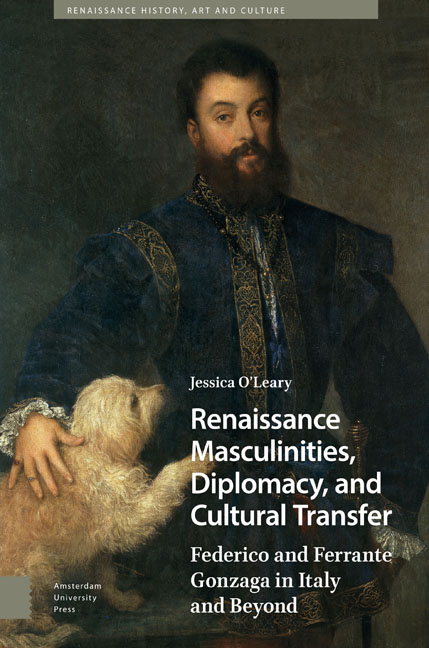 Renaissance Masculinities, Diplomacy, and Cultural Transfer
Renaissance Masculinities, Diplomacy, and Cultural Transfer Book contents
- Frontmatter
- Contents
- Acknowledgements
- Abbreviations
- Maps and Figures
- Introduction
- 1 Crisis Diplomacies in the Italian Wars
- 2 Warring Masculinities
- 3 Imperial Masculinities
- 4 Diplomacy of Magnificence
- 5 Imperial Networks and Loyalties
- 6 Interpretations of Renaissance Masculinities
- Conclusion
- Bibliography
- Index
3 - Imperial Masculinities
Published online by Cambridge University Press: 08 May 2024
- Frontmatter
- Contents
- Acknowledgements
- Abbreviations
- Maps and Figures
- Introduction
- 1 Crisis Diplomacies in the Italian Wars
- 2 Warring Masculinities
- 3 Imperial Masculinities
- 4 Diplomacy of Magnificence
- 5 Imperial Networks and Loyalties
- 6 Interpretations of Renaissance Masculinities
- Conclusion
- Bibliography
- Index
Summary
Abstract
This chapter examines the sojourn of Ferrante Gonzaga at the court of Charles V in Habsburg Spain, between 1523 and 1526. Drawing on a similar corpus of archival and published epistolary and diplomatic records, I argue that Ferrante Gonzaga reinvented himself as a loyal soldier of Charles V. However, his choices resulted in epistolary tension with his mother, Isabella d’Este. The tension is demonstrative of the changing political landscape of sixteenth-century Italy that enabled sons of middling Italian dynasties to forge a political and military career in the service of a foreign state, if they had the right connections.
Keywords: Gonzaga, Italian Wars, Gender, Charles V, Mantua, Cultural Transfer
In 1522, Milan once again changed hands in dramatic fashion. The duchy continued to serve as a bellwether for the wider changes occurring in the Italian Wars and Mediterranean politics, with its fall to Imperial forces marking a turning point in the conflict and signalling a shift in the balance of power. On April 27, the Spanish infantry led by Prospero Colonna defeated the Franco-Venetian army at the Battle of Bicocca, just north of Milan. The governor of Milan, Odet de Foix, was defeated by the imperial army's combination of traditional pike and shot formations, and new tactics involving the use of wagons to protect their flanks. The triumph led to the collapse of French control in northern Italy, allowing for the imperial capture of Milan and Genoa. It was a decisive victory for the twenty-two-year-old Charles V against his rival, Francis I. Buoyed by the victory, the emperor elect claimed that the remaining Italian states were part of his empire, and they should pay to maintain the imperial army in Lombardy. Charles's agents extorted money from Siena, Lucca, and Florence, although the states claimed the money was gifted and not a regular payment.
The Battle of Bicocca marked the beginning of French decline in Italy and the rise of the Habsburgs in Europe. Charles's victory at the Battle of Bicocca intensified the nascent rivalry between Francis and Charles, and confirmed the permanent shift in the status quo in Italy.
- Type
- Chapter
- Information
- Renaissance Masculinities, Diplomacy, and Cultural TransferFederico and Ferrante Gonzaga in Italy and Beyond, pp. 97 - 126Publisher: Amsterdam University PressPrint publication year: 2024
